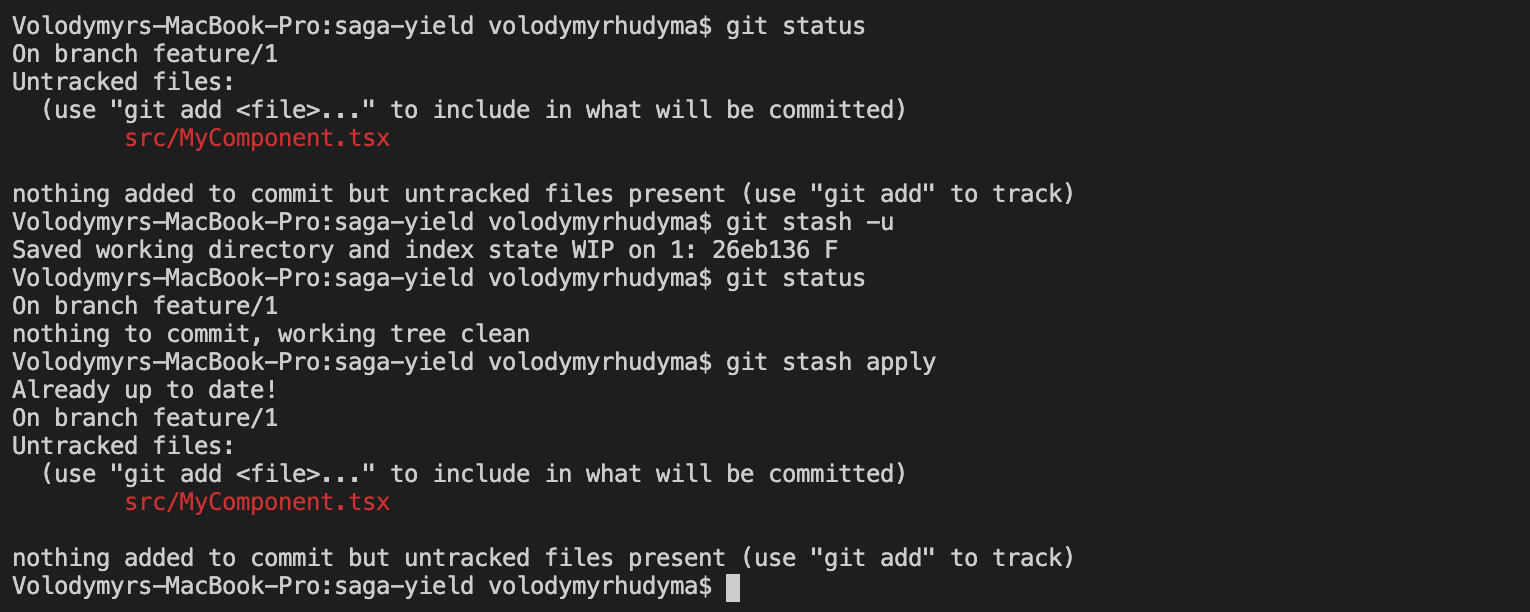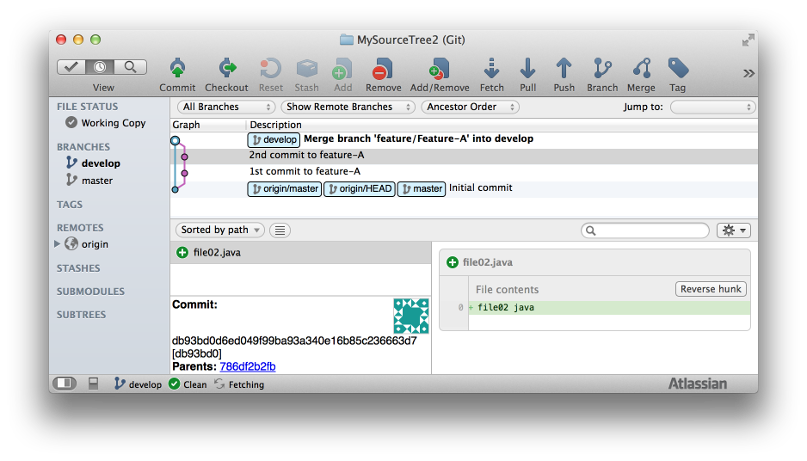

#GIT STASH FILES MANUAL#
If you are both working on the same branch and modifying the same files, then it is still possible that you need to perform a manual merge.
#GIT STASH FILES PATCH#
You then pull the changes of your teammate and apply the patch you created earlier. You create a patch, include the commits you are ahead of the remote branch, and reset your branch to HEAD of the remote branch. I don't know about you, but I don't like these kinds of merges. It is time to pull and perform a nasty merge. You are about to push your changes to GitHub when you notice that your teammate already pushed her changes.

You are both working on the same branch and firing on all cylinders, committing as if your life depended on it. Imagine you are working with a teammate on a big, complex feature. Patches can be used in a wide range of scenarios. Select the commits you want to include in the patch, right-click, and choose Save Patch for X Revisions. I interact with Git using a combination of the command line interface and Fournova's Tower. They are also a good alternative to cherry picking. You can apply patches to branches no matter what the branching model looks like. It is easy to store patches to disk or share them with other developers. A patch combines several commits or the changes in the working directory. Both commands group a number of changes that you can apply later. In a way, patching is similar to stashing. Saved working directory and index state On feature/search: search feature

This makes it easy to find stashes and apply or remove a stash by name. If you frequently use stashes, it is recommended to name your stashes. To apply a stash, you pop it from the stack of stashes. You switch to the release branch, create a build, return to the branch you were working on, and apply the stash you created earlier. The changes in the working directory and the staging area are safely stored for later use.
#GIT STASH FILES UPDATE#
Saved working directory and index state WIP on feature/search: 5aa493e Update assets To stash the changes in the working directory and the staging area, you execute the following command. There is a more elegant solution, though.Įnter git stash. What do you do with the changes in your working directory? Do you make a dirty commit just to make sure you don't lose your work? You could create a new branch and commit your changes on that branch. Your boss walks in and asks you to create a build of the release branch you created the day before. You are in the middle of implementing a complex feature and your working directory is littered with changes in dozens of files and folders. When should you use the stash command? Imagine the following scenario. This means that you can create as many stashes as you want. The stashed changes are pushed onto a stack. This command stashes the changes in the working directory and the staging area for later use, leaving you with a clean working directory and staging area. StashingĪ very useful, yet simple, Git command is stash. They are easy to pick up and they may save you a lot of time and frustration. In this tutorial, I show you three tricks I find myself using on an almost daily basis. It is easy to get up and running with Git, but it takes time and a bit of learning to become familiar with its more subtle and more advanced features. It was created by Linus Torvalds more than a decade ago. Git is one of the most popular source code management systems available to developers.


 0 kommentar(er)
0 kommentar(er)
